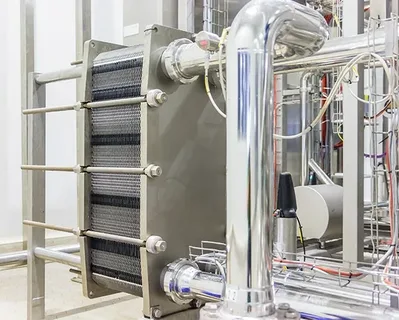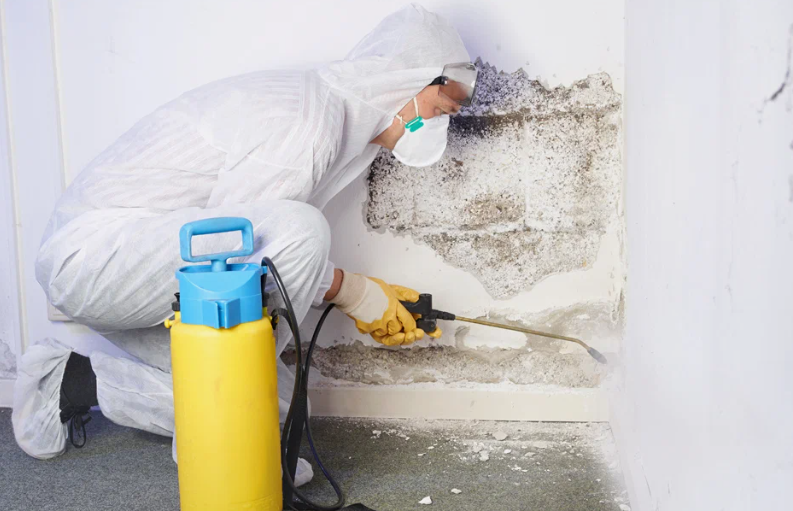Are you looking for a way to enhance your home’s energy efficiency while maintaining comfort? If so, Passive House Heat Exchanger might just be the solution you need. These innovative systems play a pivotal role in modern energy-efficient homes, ensuring optimal indoor air quality without compromising on warmth or coolness. By harnessing the power of ventilation and heat recovery, these devices provide an eco-friendly approach to heating and cooling that can significantly lower your utility bills.
What is a Passive House Heat-Exchanger?
A Passive House Heat-Exchanger is a crucial component of high-performance building systems. It facilitates the transfer of heat between incoming and outgoing air, ensuring energy is conserved while providing fresh ventilation. These devices are designed specifically for ultra-low energy buildings, where maintaining comfortable indoor temperatures with minimal energy input is essential. By recovering heat from stale exhaust air, they effectively warm up the cooler incoming air during winter months.
In warmer seasons, this process works in reverse; the system helps cool down incoming air by using the cooler exhaust airflow. This two-way exchange enhances indoor comfort while reducing reliance on traditional heating or cooling methods. With their focus on sustainability and efficiency, Passive House Heat-Exchangers contribute significantly to reduced carbon footprints in residential and commercial spaces alike.
How Does a Passive House Heat-Exchanger Work?
A Passive House Heat-Exchanger plays a crucial role in maintaining indoor air quality while conserving energy. It operates on the principle of heat recovery, transferring warmth from outgoing stale air to incoming fresh air. When warm indoor air is expelled, the heat exchanger captures its thermal energy. This process occurs through a series of channels that separate the two airflow streams. As fresh outdoor air enters, it absorbs this captured warmth before circulating throughout your home.
This system ensures that you can ventilate your living spaces without losing valuable heat during colder months. The result? A comfortable and efficient environment all year round. By optimizing airflow and balancing humidity levels, these exchangers enhance overall comfort while significantly reducing heating costs. It’s an innovative solution for environmentally conscious homeowners looking to minimize their carbon footprint without sacrificing comfort.
Benefits of Using a Heat Exchange System for Home
A Heat Exchange System for Home offers a multitude of advantages for homeowners. One of the most significant benefits is improved energy efficiency. These systems transfer heat between incoming and outgoing air, reducing reliance on heating or cooling units. Another advantage is enhanced indoor air quality. By constantly circulating fresh air while filtering out pollutants, these systems help maintain a healthier living environment.
Cost savings are also noteworthy. Although initial installation may seem high, reduced energy bills over time can offset this expense significantly. Moreover, these systems contribute to consistent comfort levels throughout your home. Say goodbye to hot and cold spots as the temperature remains even in all rooms. Adopting a heat exchange system aligns with eco-friendly practices. Lowering your carbon footprint has never been easier while enjoying modern comforts at home.
Types of Passive House Heat-Exchangers
When exploring Passive House Heat-Exchangers, one can encounter various types designed for specific needs. One common type is the counterflow exchanger. This system efficiently transfers heat between incoming and outgoing air streams, maximizing energy recovery. Another option is the crossflow heat exchanger. It separates airflow paths while allowing them to exchange thermal energy. This design works well in moderate climates but can be less efficient than counterflow systems in extreme temperatures.
Then there are rotary heat exchangers that feature a rotating wheel to transfer warmth or coolness between airflows. These units excel in humid environments as they manage moisture effectively. Plate heat exchangers also deserve mention due to their compact size and high efficiency levels. They consist of thin plates stacked together, facilitating quick and effective thermal exchange without taking up much space. Each type offers unique advantages suited for different home setups and climate conditions.
Choosing the Right Passive House Heat-Exchanger for Your Home
Selecting the right Passive House Heat-Exchanger can significantly impact your home’s energy efficiency. Start by assessing your home’s size and layout. The capacity of the heat exchanger should align with these factors to ensure optimal performance. Next, consider the specific climate in which you live. Different models are designed for various weather conditions, so choose one that suits your environment best.
Look into the types of filters included as well. High-quality filters not only enhance air quality but also prolong the life of your system. Energy efficiency ratings are crucial too. Higher-rated units may come at a premium but offer long-term savings on energy bills. Don’t forget about noise levels during operation. Some models operate quietly while others might be disruptive, especially in shared living spaces.
Understanding Energy Efficiency Ratings for Heat Exchange Ventilation
Energy efficiency ratings for heat exchange ventilation systems can be complex, but they are crucial for making informed decisions. These ratings typically indicate how effectively a system transfers heat between incoming and outgoing air. The most common rating is the Heat Recovery Efficiency (HRE). This metric shows the percentage of energy recovered from exhaust air that is reused to precondition incoming fresh air. Higher HRE values mean better performance.
Another important measure is the Specific Fan Power (SFP), which indicates energy consumption relative to airflow. A lower SFP value suggests a more efficient fan operation, leading to reduced electricity costs over time. Look for systems certified by reputable organizations, as these often adhere to strict standards. Understanding these ratings empowers homeowners to choose solutions that not only enhance comfort but also align with sustainability goals.
Maintenance and Care Tips for Passive House Heat-Exchangers
Maintaining your Passive House Heat-Exchanger is essential for optimal performance. Start by checking the filters regularly. Clean or replace them every few months to prevent dust and debris buildup. Next, inspect the ductwork for any leaks or blockages. Even small gaps can reduce efficiency significantly. Sealing these will help ensure that airflow remains uninterrupted. Don’t forget to clean the heat exchanger itself at least once a year. This prevents corrosion and maintains its ability to transfer heat effectively.
Consider scheduling professional maintenance annually. Experts can spot issues early, saving you time and money in repairs down the line. Pay attention to your system’s noise levels too. Unusual sounds could indicate something needs addressing before it becomes a bigger problem. Keep an eye on energy bills; unexpected increases may signal inefficiencies in your system needing immediate action.
Common Misconceptions about Passive House Heat-Exchangers
Many people believe that Passive House Heat-Exchangers are overly complicated. In reality, they operate on straightforward principles of heat transfer. Understanding these basics can simplify the installation and maintenance process. Another misconception is that these systems require constant monitoring and adjustment. Once set up properly, they work effectively with minimal intervention, allowing homeowners to enjoy efficient heating and cooling without much hassle.
Some assume that a Passive House Heat-Exchanger will only benefit new builds. However, existing homes can also be retrofitted with these systems for enhanced energy efficiency. There’s a belief that all heat exchangers perform similarly. The truth is that choosing high-quality models tailored to specific needs makes a significant difference in performance and energy savings over time.
Maximize Performance with High-Quality Heat Exchanger Vent
When it comes to maximizing the performance of your Heat Exchanger Vent, investing in high-quality vents is crucial. These components play a vital role in ensuring optimal air flow and energy efficiency. Quality vents enhance the transfer of heat between incoming and outgoing air. This process not only improves indoor comfort but also reduces heating costs. High-performance materials resist wear and tear, providing longevity.
Proper sizing can’t be overlooked either. Vents that fit perfectly within your system can significantly boost overall effectiveness. They help maintain balanced ventilation without sacrificing airflow quality. Moreover, advanced designs often feature integrated filters or noise reduction technology. This means cleaner air, quieter operation, and fewer maintenance issues down the line.
Choosing top-notch vents may seem like an added expense upfront. However, their impact on energy savings makes them a smart investment for any homeowner dedicated to sustainability.
Optimize Energy Efficiency with Advanced Heat-Exchanger Vents
Advanced heat-exchanger vents take energy efficiency to the next level. They use cutting-edge technology to ensure optimal airflow and temperature control in your home. These systems often feature multiple settings, allowing for tailored ventilation based on your specific needs. By adjusting air exchange rates, you can maintain a consistent indoor climate without wasting energy.
Moreover, modern designs include insulation properties that further enhance performance. This minimizes heat loss during colder months while maximizing cooling benefits in summer. Installation of advanced vents is typically straightforward, making them an accessible upgrade for many homeowners. The long-term savings on energy bills are compelling incentives too.
Investing in these efficient solutions not only reduces environmental impact but also contributes to overall comfort within your living space. Adaptability and innovation define these products, setting the stage for a sustainable future in home design.
conclusion
Passive House Heat Exchanger play a crucial role in modern energy-efficient homes. They ensure optimal indoor air quality while minimizing energy loss. Choosing the right system can significantly impact comfort and utility costs. Homeowners should consider factors like size, efficiency ratings, and maintenance requirements when making their selection. With proper care, these systems can provide long-lasting benefits. Regular checks help maintain performance levels and extend the lifespan of your investment.
FAQs
What is a Passive House Heat Exchanger?
A Passive House Heat Exchanger is a system designed to improve indoor air quality while maximizing energy efficiency. It transfers heat between incoming and outgoing air streams without mixing them, ensuring that fresh air enters while stale air exits.
How do I maintain my Passive House Heat-Exchanger?
Regular maintenance involves cleaning or replacing filters as needed, checking for blockages in venting systems, and ensuring all components are functioning correctly. Scheduled inspections by professionals can also help keep your system running smoothly.
Can I install a Passive House Heat-Exchanger myself?
While some homeowners may attempt DIY installation, it’s advisable to work with professionals who specialize in heating and ventilation systems. Proper installation ensures optimal performance and compliance with building codes.
What should I look for when choosing a heat exchanger?
When selecting a heat exchanger for passive housing, consider factors such as its energy efficiency rating, capacity to handle your home’s airflow needs, ease of maintenance, and compatibility with existing HVAC systems.
| Related Business Listings |
| Contact Directory |
| Local Business Profiles |


